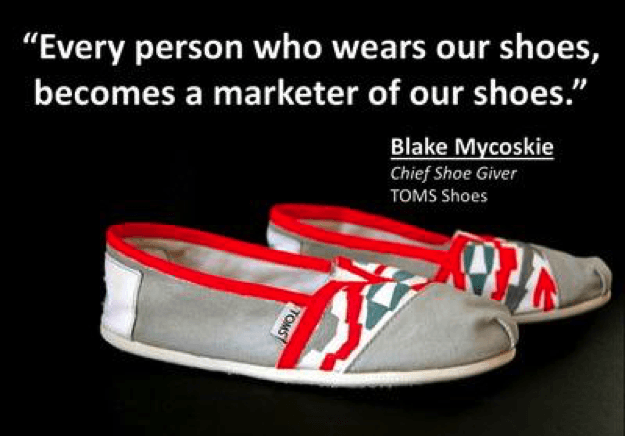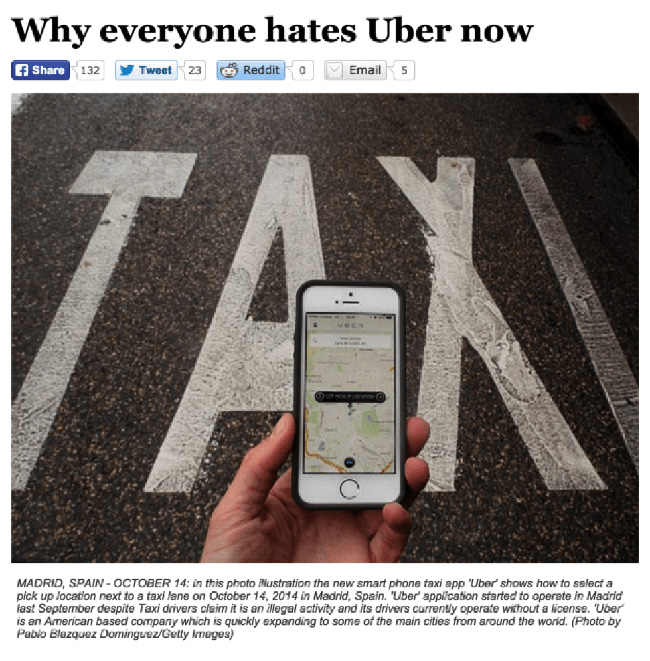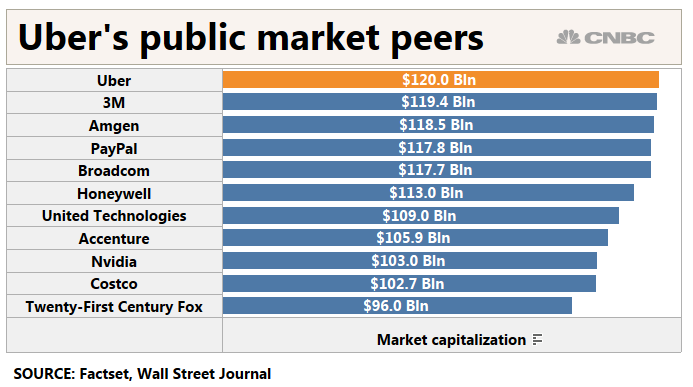Growth hacking is the biggest “easier said than done” of all time. Just because something is a “hack” doesn’t make it any easier, simpler, or worry-free.
Still, there’s something to be said about the raw power of a brilliant marketing hack. When you pull off a successful marketing move, you get an incredible rush.
If your startup is struggling, desperate to try anything, then you’ve found the article that could be the solution to your yearnings.
The marketing hacks that I explain in this article aren’t easy, aren’t free, and aren’t even fail-safe. But they are awesome.
If you’re ready for growth and prepared for some hard work, give these a try.
1. Do brand evangelism.
A brand evangelist is a personality that spreads the word about a product or service through his or her personal reputation and network.
Basically, its word of mouth marketing (WOMM). In the digital age, word-of-mouth marketing is sneered against as an outdated, ineffective, and pretty much passé.
In reality, word of mouth is huge. And it works. A Forbes article labeled word of mouth marketing “the most important social media.” In an age dominated by Twitter, Pinterest, and Facebook, word of mouth still wins the day.
It’s one thing to know that word of mouth marketing works, but how does one actually do it?
Turn fans into evangelists
Develop a brand story, and help customers buy into it. When customers have an emotional connection to a brand, they feel as if the brand’s success is dependent upon their involvement.
A brand like TOMS has turned customers into spokespeople because of its strategy of giving back. As Blake Mycoskie said, “Every person who wears our shoes, becomes a marketer of our shoes.”
Hire an evangelist.
There are evangelists for the hire. You may not be able to afford a rockstar like Guy Kawasaki, but you can take a page or two from his playbook.
What does he suggest?
Go for the nobodies. An evangelist reaches out and down. Here’s his advice:
It used to be top down – suck up to the powerful people, hope they like your product and that they make your product. Now it’s bottom up – if enough “[email protected]” like your product, it can tip over and then powerful people have to pay attention to you.
Evangelists don’t have to be major players. They simply have to be “willing to grind it out and do the dirty jobs,” in Kawasaki’s words.
That’s the essence of word of mouth marketing. It’s putting in the time and doing the hard work to connect with people.
Your best evangelists are your own team members. They know the product, the company, the culture, and its values. Don’t just hire people to fill roles. Hire people to spread the word while they fill their roles.
Become an evangelist yourself
To become a successful brand evangelist, you need to grow your personal brand.
You can grow your brand and market your product at the same time.
This is how I propelled Quicksprout to become a successful blog with a steady revenue stream. I became an outspoken advocate for digital marketing including SEO and content marketing.
As I proved the success of these methods, I discovered the incredible value of the personal brand. I discovered, by accident, that being a popular blogger had turned me into a brand evangelist. I could market products by pushing my personal brand.
And that’s exactly how you can become an evangelist for your business. Grow your own brand, and you will successfully grow other brands.
2. Start a cult.
Most cults have negative connotations (and for good reason). In the case of brand cults, it’s completely positive.
Some brands are way more than just brands. They have followers who are obsessive, passionate, out of control but darn good at marketing.
Is it possible to form a cult-like following? Absolutely. Every good product fills a need and connects with real people. Those people have the potential to get excited about the product.
What matters is that these people are passionate, devoted, and fulfilled. And they will promote your brand, even if it makes them sick.
What are some examples of brands with cult-like followings?
- Harley Davidson – motorcycles
- Southwest – an airline
- Chick-fil-A – a fast-food chain that serves chicken
- Oprah – inspirational and informative speaking
- Ben & Jerry’s – ice cream
- Zappos – shoes and apparel
- Apple – software, computers, smartphones, etc.
- Linux – an operating system
- Starbucks – coffee
- Ikea – home furnishing
How did these brands stir up fanaticism in their customer base? Cult Branding’s endless research into cult brands has produced the following seven features.
- The brand must be different. Cult-prone customers aren’t likely to desire mainstream conformity.
- The brand must exhibit courage. Why? Because cult members must possess courage themselves if they are to be part of a cult.
- The brand must be fun. After all, it’s about a lifestyle, not just a product.
- The brand must listen to its customers. The customer wants to feel valued. They’re buying into something. Therefore, their voice deserves to be heard.
- The brand must work hard to create communities. Normally, the cult does not organize and form spontaneously. The brand itself must facilitate organization, or at the very least, it should effectively communicate a slogan, a story, a message, and a goal.
- The brand must be open. Cults, in spite of their insular reputation, accept new converts and devotees.
- The brand must promote freedom. When the brand exhibits a sense of freedom, its customers feel empowered to promote the brand with their enthusiasm, off-the-wall ideas, and crazy actions.
A cult may be the best thing your brand can ever become.
3. Tick people off.
Some of the most explosive marketing moves of all time have come with a fair share of negativity.
You’ve probably heard people say, “There is no such thing as bad publicity.”
The idea is this: Anytime your brand gets publicity, it’s a good thing, even if the news about the brand is negative.
A timeless Stanford Business study put it this way:
Negative publicity can increase sales when a product or company is relatively unknown simply because it stimulates product awareness.
The operative term is “relatively unknown.” The technique might not work for a brand that is already famous.
The study’s authors, Jonah Berger, Alan Sorensen, and Scott Rasmussen, tracked the success of 240 fiction books that were reviewed by the New York Times. First, they looked at the titles written by established authors. If a book got a positive review, sales increased by 32-52%. If a book got a negative review, sales dropped by 15%.
Researchers then analyzed books that were written by emerging authors. If the book received a negative review, sales shot up by 45%. Negative publicity, in this case, was good publicity, insofar that it improved sales.
Uber is an example of a company that rose to stardom on the wings of negative buzz. Since its early days, the company has had plenty of big fans and just as many opponents.
Uber has sparked protests, enraged the establishment, and disrupted an industry that was content with ineptitude. The brand’s legal complexities have produced enough negative press to fill several volumes of Britannica.
And what has the controversy produced? It has produced value.
Growth Hackers discussed the Uber growth phenomenon, referencing the role of controversy:
The company has done a masterful job of turning these dust ups into a platform to tell their pro-consumer story. Uber has taken what could be seen as a massive business hurdle—litigation—and turned it into an asset that drives growth.
As Uber launches into market after market, these controversies are played out in the court of public opinion, and the power of Uber advocates and the quality of the experience, create an outpouring of local public support for the company.
Today, Uber remains one of the most valuable startups of all time.
Can your startup hack the same kind of negativity and grow like Uber? Maybe.
Be aware that negativity alone is not the cause of Uber’s growth. There are plenty of very smart things that the business has done. However, negativity has been part of the recipe.
Let’s not forget also the fact that established brands usually decline in the face of withering negativity. Toyota’s recovery is not complete. BP is still reeling from its oil spill. What distinguishes ineffective bad publicity from effective bad publicity?
Here are some tips:
- Bad publicity usually improves new brands, not old or established ones. The best time to go wild and fearless is early on. You have less to lose and more to gain.
- Good publicity is usually better than bad publicity. For all the talk about “bad publicity,” we shouldn’t overlook the fact that good publicity is still better than bad publicity. If you have a choice, go positive.
Here’s the bottom line on publicity. Be fearless. What do you have to lose as a struggling startup? Publicity is awesome, and the more of it, the better.
Conclusion
Evangelism, cults, and anger don’t sound like the rules of successful companies. But we’re not talking about being normal. We’re talking about a level of differentiation that produces growth by an alternate method.
Success doesn’t always come through traditional means. Rarely does it come by accident. It does, however, have a great chance at success through alternative marketing methods.
Ready to give it a try?
- Become an evangelist. Hire evangelists. Create evangelists.
- Create a brand with a cult-like following.
- Don’t be afraid to stir up controversy.
Which of these methods do you think will work best for your business?




Comments (5)